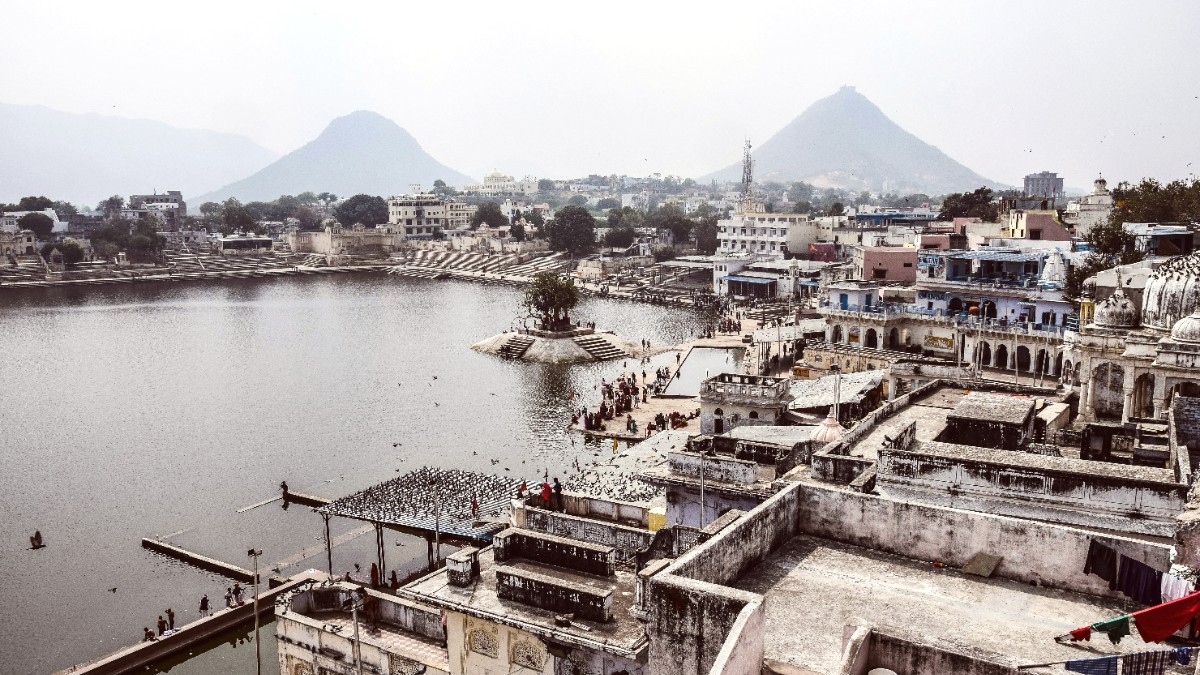
Rajasthan, India
The Jagatpita Brahma Mandir, or Brahma Temple, holds unique global significance as one of the very few temples dedicated to Lord Brahma, the creator god in Hinduism.
The current structure dates back to the 14th century, reflecting its enduring legacy. It is a highly important pilgrimage site for devotees.
Be polite but firm in declining unwanted services.
A labyrinth of shops selling religious items, traditional handicrafts, colorful textiles, and souvenirs.
Most shops are generally open from 10:00 AM to 9:00 PM.
Bargaining is expected and encouraged. Approach it politely. Watch out for petty theft in crowded areas.
A wide array of goods awaits, from spiritual artifacts to unique local crafts.
A bustling and colorful bazaar with a atmosphere.
Pushkar, while rich in history and spirituality, does not feature large, formal museums or extensive cultural institutions. Its cultural essence is deeply embedded in its daily life, religious practices, and traditional arts.
Pushkar itself does not feature major museums or large-scale cultural institutions in the traditional sense.
For a museum experience, consider a day trip to Ajmer, the nearby city.
Ajmer hosts the Akbari Fort & Museum, with exhibits related to the Mughal and Rajput periods.
The Akbari Fort & Museum provides a historical context that contrasts with Pushkar's purely spiritual focus.
Pushkar's cultural essence is embedded in its daily life and religious practices, rather than formal institutions.
Traditional arts and spiritual practices define Pushkar's cultural identity.
Beyond the Brahma Temple, Pushkar and its surroundings feature other historical and spiritual sites that shape its ancient story.
Pushkar hosts several temples, each with its unique history and architectural style, beyond the renowned Brahma Temple.
The old parts of Pushkar town, with their narrow lanes and traditional havelis, offer a charming historical presence.
Explore these temples for a glimpse into Pushkar's diverse religious heritage and peaceful worship locations.
Pushkar's natural setting, bordered by hills and desert, features scenic beauty and opportunities for appreciating the landscape.
The Aravalli Range hills that surround Pushkar contribute significantly to its distinctive valley setting. These ancient hills define a natural boundary and scenic backdrop to the town and lake.
Pushkar is known for its extensive rose cultivation. These fields are a beautiful sight and the source of Pushkar's famous rose products, especially when roses are in bloom (winter to spring).
This location features the most comprehensive panoramic views of Pushkar Lake and the surrounding landscape, including the town and the distant desert. Especially striking at sunrise or sunset.
Pushkar is not a main wildlife viewing destination. Encounter camels, cows, and various bird species around the lake and in the surrounding desert areas. These animals are part of the local landscape.
The early morning or late evening light at Pushkar Lake, from spots like Gau Ghat or Varaha Ghat, creates stunning photographic conditions.
Find photography toursThe elevated position provides a wide landscape shot of the town and lake.
On the outskirts of town, capture traditional desert transport against the sandy backdrop.
Book a camel safariThe ancient Aravalli hills form a picturesque natural boundary and scenic backdrop to Pushkar.
The narrow, winding backstreets away from the main market reveal local life and traditional homes.
Beyond the well-known sites, Pushkar holds smaller, less-visited gems that offer unique perspectives and quieter experiences.
Explore these spots for a dive into local life and regional charm, away from the main tourist hubs.
Consider exploring these less-traveled paths for a more intimate and authentic experience of Pushkar's hidden beauty.
Always respect local customs and seek permission when entering private or sacred spaces.
Beyond the well-known sites, Pushkar holds smaller, less-visited gems that offer unique perspectives and quieter experiences.
These locations offer distinct views and a more serene atmosphere away from the main crowds.
Experience authentic local life and regional charm away from the typical tourist routes.
Pushkar's natural setting, with its surrounding hills and desert, offers scenic beauty.
The Aravalli Range hills create a distinctive valley setting and scenic backdrop.
Pushkar's cultural essence is deeply embedded in its daily life and religious practices.
The town does not feature large, formal museums, but its living traditions are cultural treasures.
Pushkar's history is visible in its architecture and continuous religious practices.
No significant archaeological ruins directly within Pushkar, but its heritage is rich.
Begin with the Brahma Temple and Pushkar Lake, as they are central to the town's spiritual identity.
Visit hilltop temples for sunrise or sunset views. Allocate specific times for market exploration to enjoy the atmosphere.
Most central sites are walkable. Consider auto-rickshaws or the ropeway for hill temples.